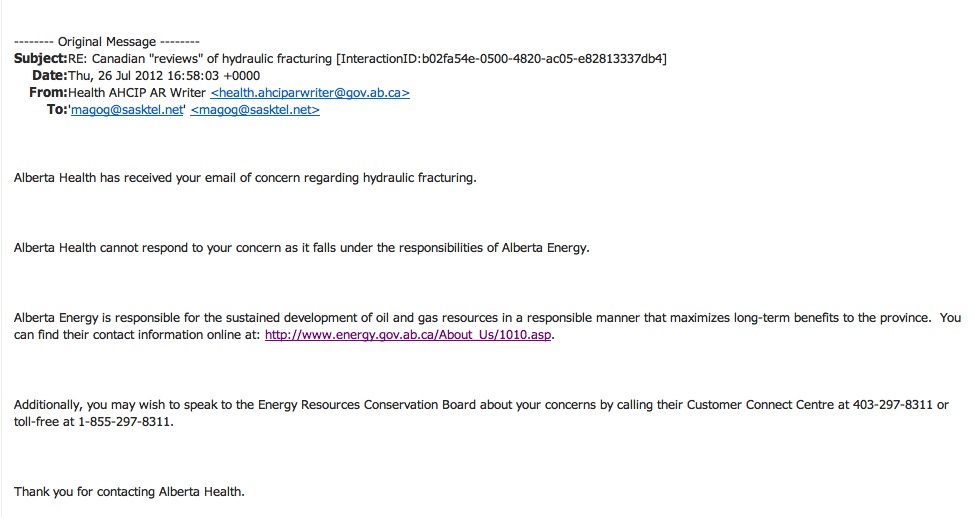Braid: Temptation to take one last dip into public purse proving too great by Don Braid, March 27, 2013, Calgary Herald
….Alberta Health Services is hell-bent on giving top officials another round of bonuses for missing another round of targets. … The bureaucratic argument is that officials have already done their year’s work. … Dr. Chris Eagle, CEO of AHS, advanced the pro-bonus argument on March 14, when reporters asked why he doesn’t start his big cost-cutting drive immediately by halting “at-risk” pay for 100 executives. … Eagle himself has received what AHS calls pay at risk, and most people call bonuses. He got $88,000 last year, on top of his $580,000 base salary. His argument seems to me completely nonsensical. Nobody is asking these executives to take less of their regular pay. … In the case of AHS, which has once again disastrously missed its wait-time targets, there’s also a case that diligence isn’t doing the public any good. [Emphasis added]
Alberta Health Services to pay executive bonuses, says work ‘already done’ by Canadian Press, March 27, 2013, The Calgary Herald
Board chairman Stephen Lockwood says it would be unreasonable to change compensation for executives when the fiscal year is almost over. … “We’ve already said that pay at risk is eliminated moving forward, but we are honouring our commitment for work that has already been completed.”
Above 2012 Email from Alberta Health Services to Jessica Ernst, in response to her questions and concerns about peer-reviewed studies in the US indicating significant negative health impacts from oil and gas drilling and hydraulic fracturing.
[Refer also to:
Braid: Cash burns at Alberta’s sloppy health giant
Human Health Risk Assessment of Air Emissions from Development of Unconventional Natural Gas Resources by Lisa M. McKenzie, Roxana Z. Wittera, Lee S. Newmana, John L. Adgatea, Colorado School of Public Health, University of Colorado, March 19, 2012,erierising
An exploratory study of air quality near natural gas operations
Impacts of Gas Drilling on Human and Animal Health (Bamberger, Oswald) New Solutions, 2012
The findings illustrate which aspects of the drilling process may lead to health problems and suggest modifications that would lessen but not eliminate impacts.
New research links health problems with oil and natural gas development
Fracking Poisoning Families at Alarming Rate: Report
Doctors fight “gag orders” over fracking chemicals
Fracking Moratorium Urged By U.S. Doctors Until Health Studies Conducted
Silently gassing North Americans for profit
Warning over social downsides of fracking
Natural Gas Operations from a Public Health Perspective by Theo Colborn, Carol Kwiatkowski, Kim Schultz, and Mary Bachran, accepted for publication in the International Journal of Human and Ecological Risk Assessment, September 4, 2010.
For many years, drillers have insisted that they do not use toxic chemicals to drill for gas, only guar gum, mud, and sand. While much attention is being given to chemicals used during fracking, our findings indicate that drilling chemicals can be equally, if not more dangerous.
Failure Investigation Report: Failure of Piping at EnCana Swan Wellsite A5-7-77-14 L W6M by the BC Oil and Gas Commission, February 4, 2010.
The 22 November 2009 failure…was caused by internal erosion of the wall resulting from flowing fracture sand suspended in the gas stream. Leak detection and emergency isolation at the site did not achieve timely detection of the leak or control of the escaping gas. EnCana’s integrity management program did not effectively mitigate the hazard of internal erosion.
EnCana Corporation facing criminal charges
$250000 in community safety projects following Encana deadly sour gas leak ]
